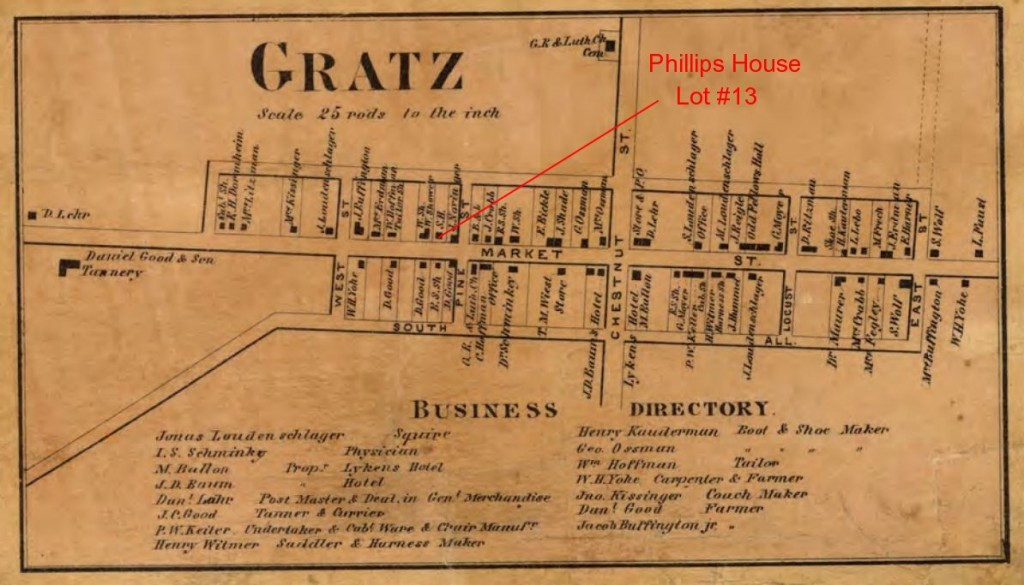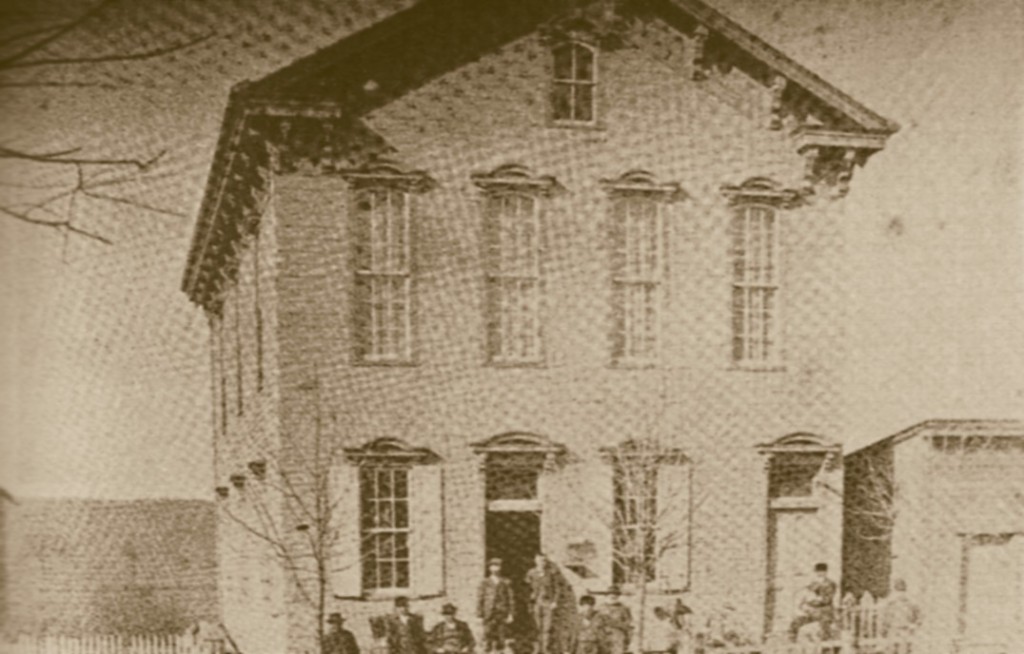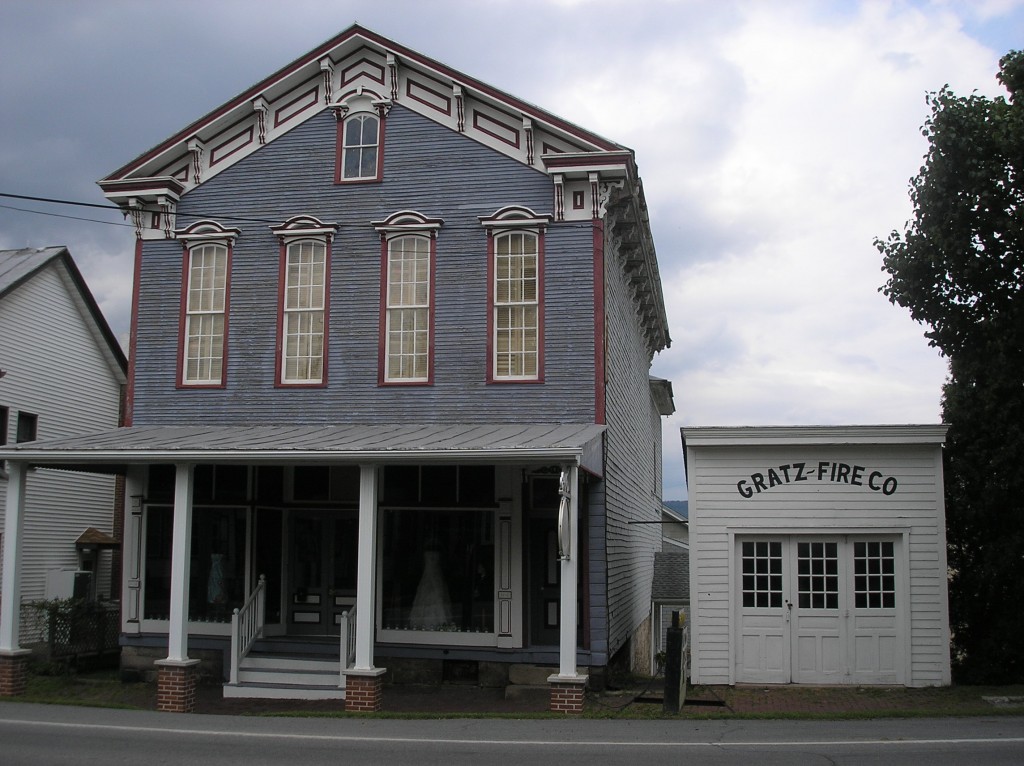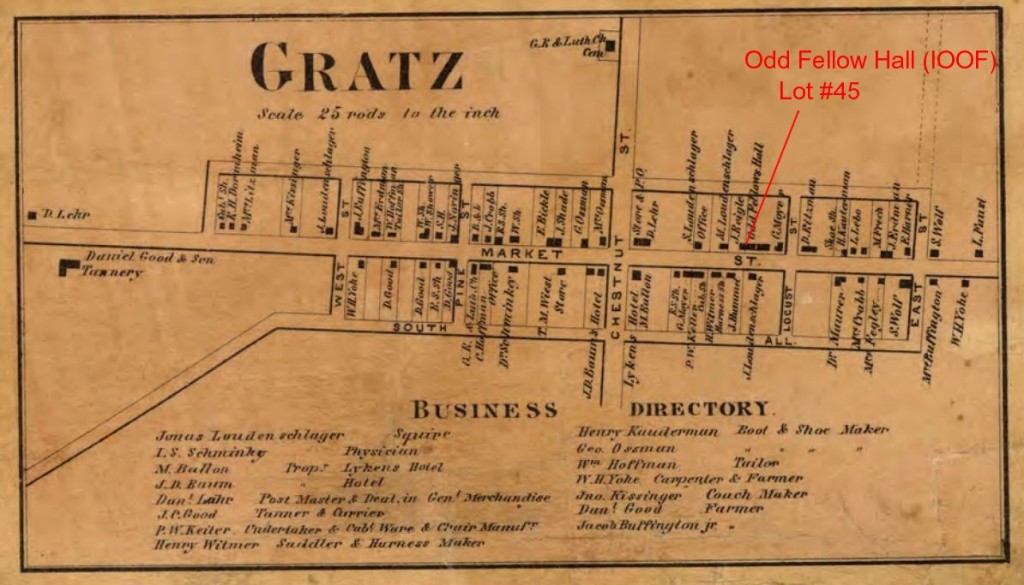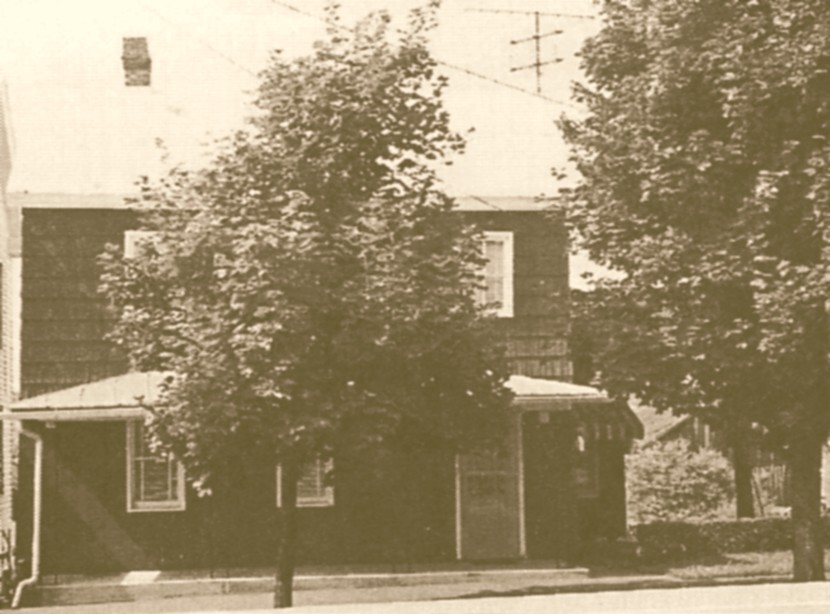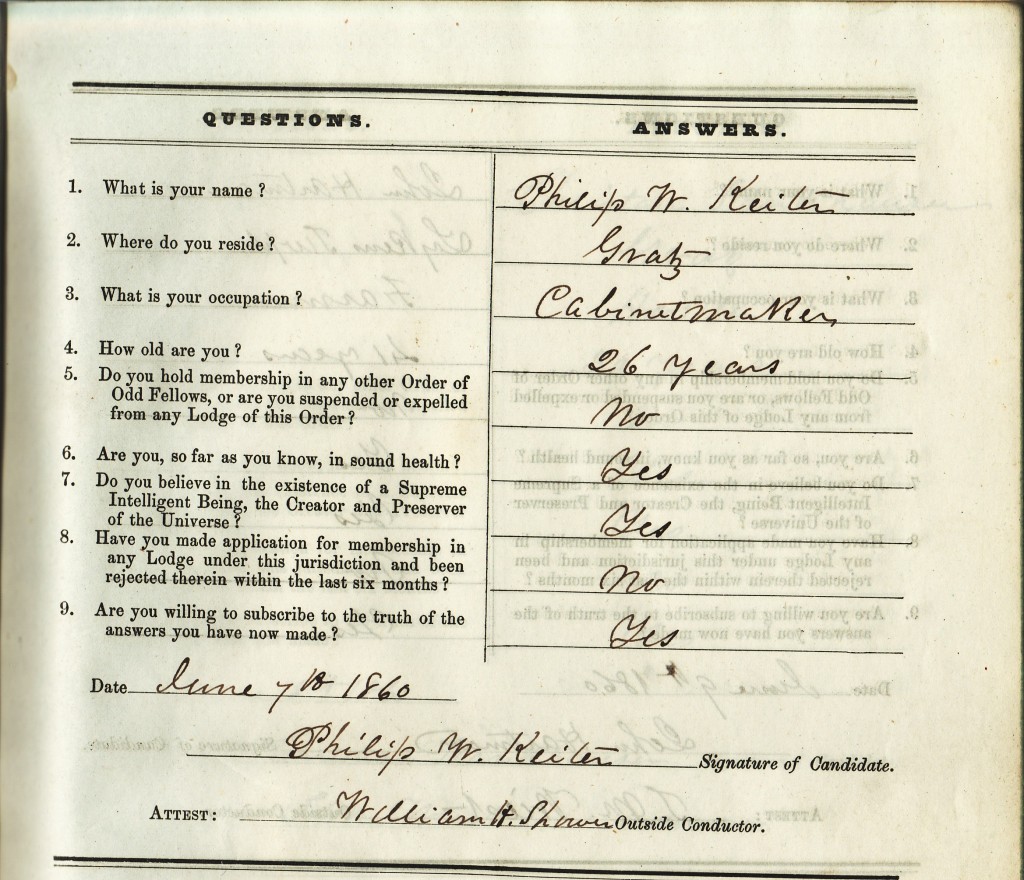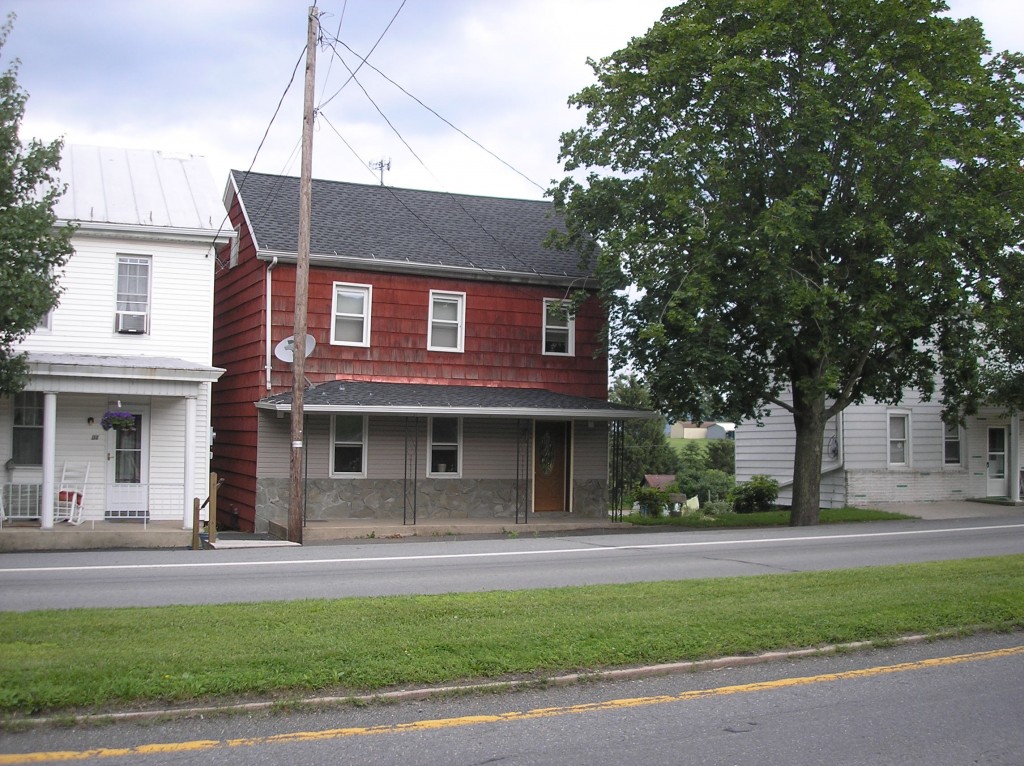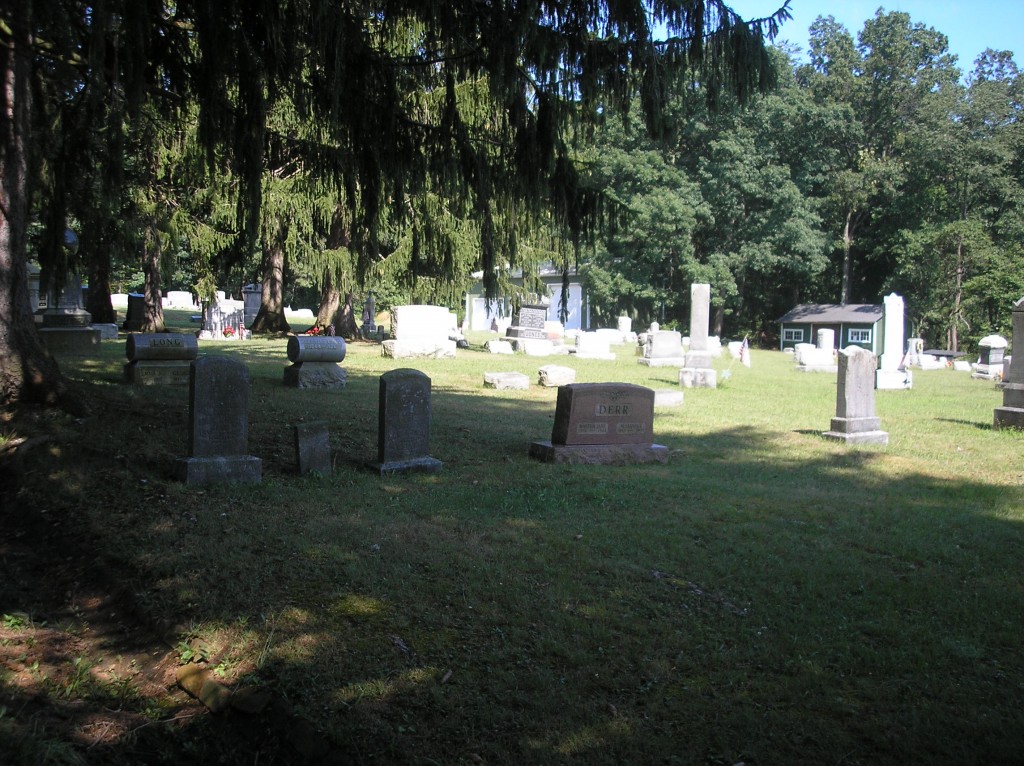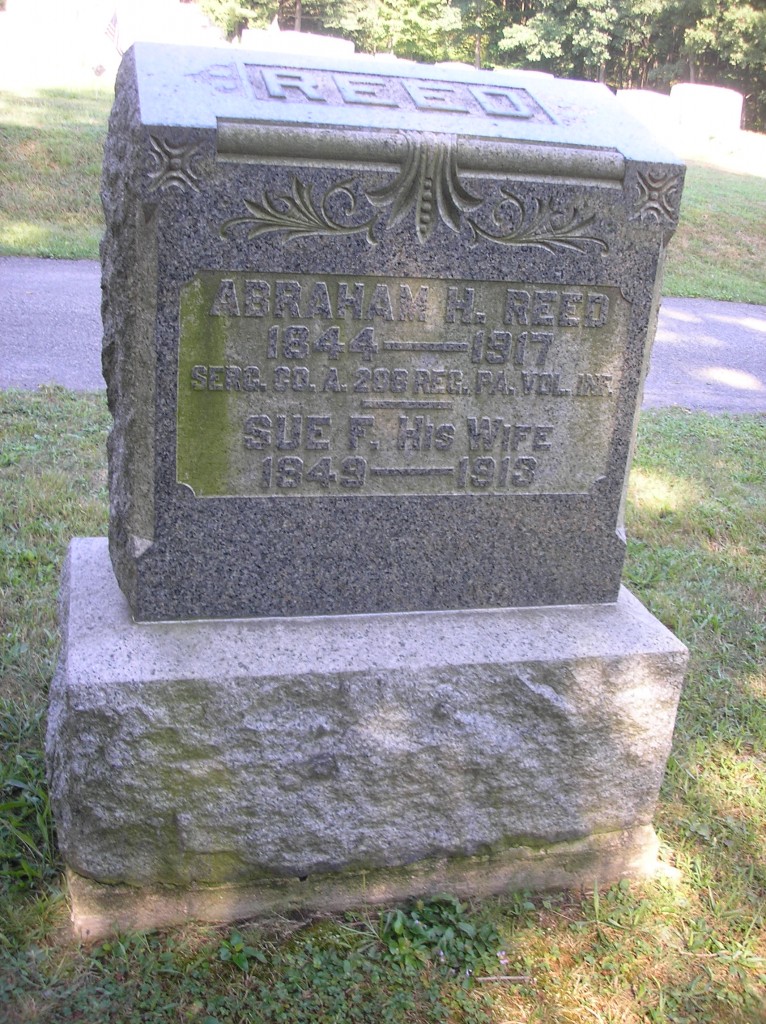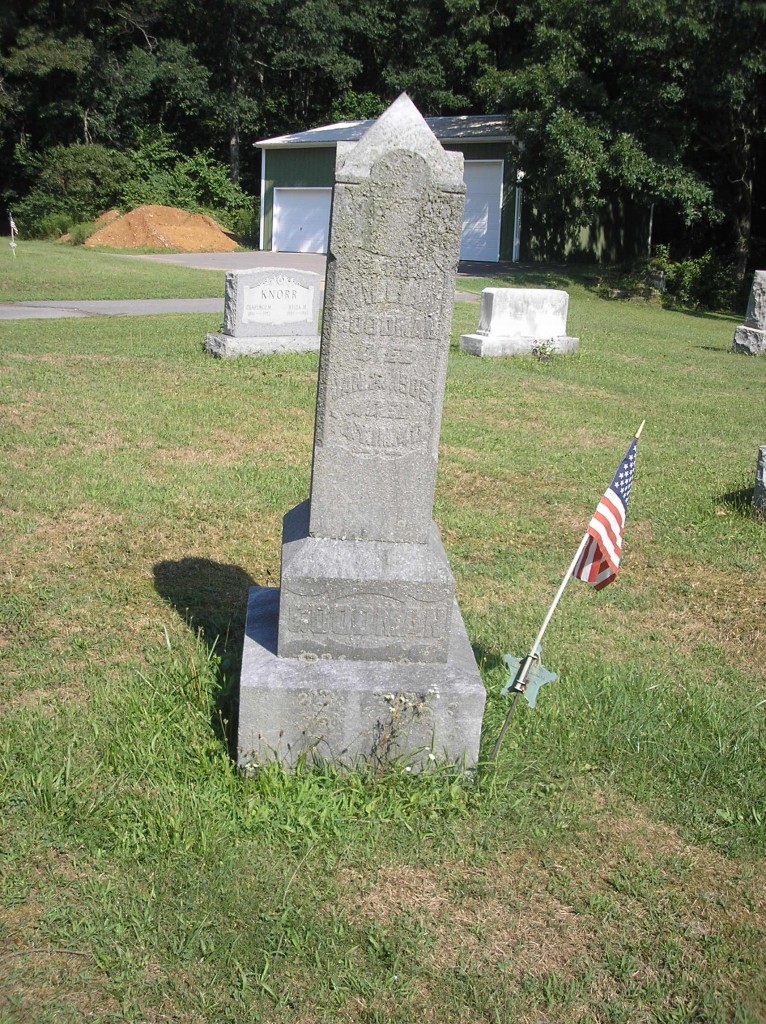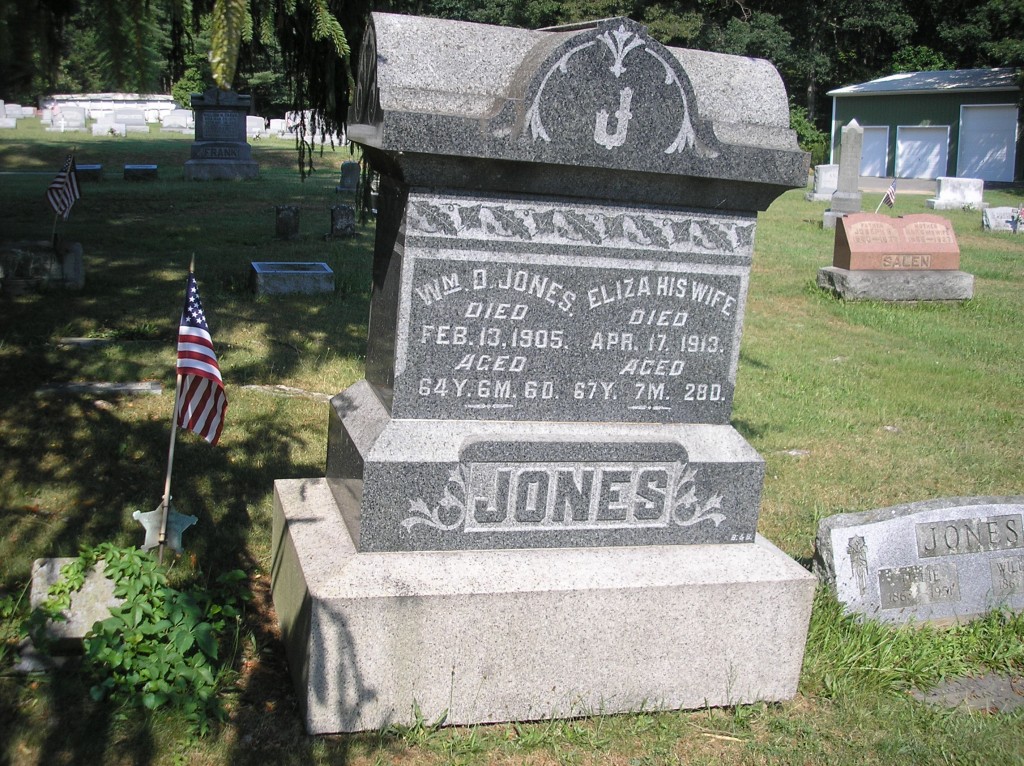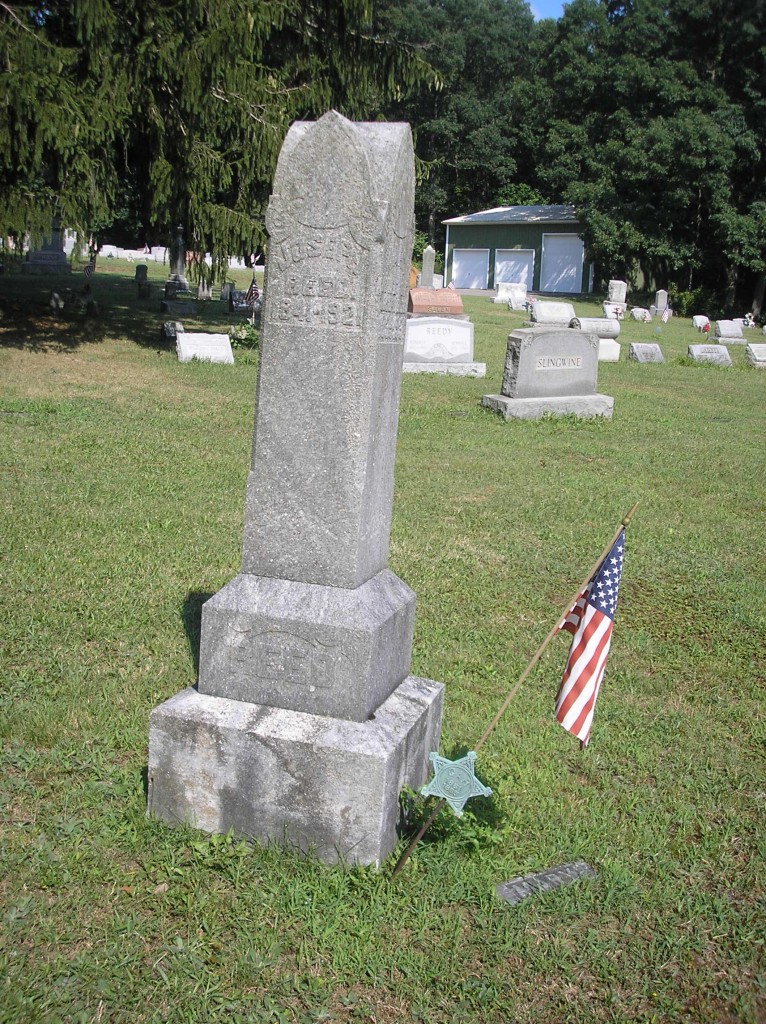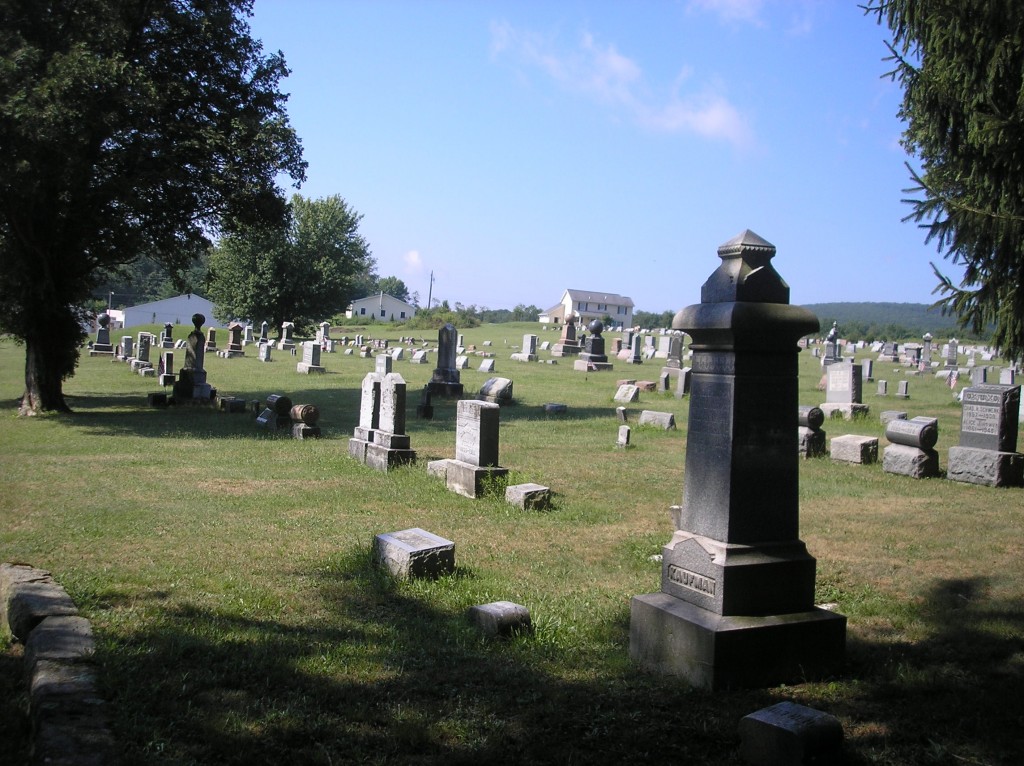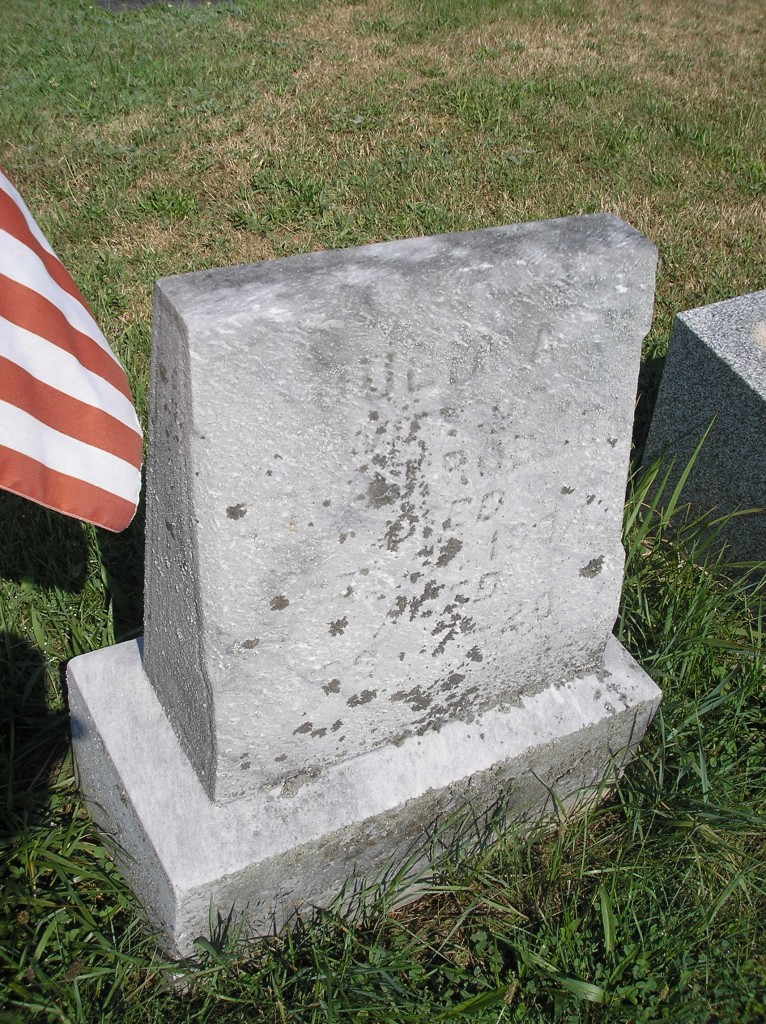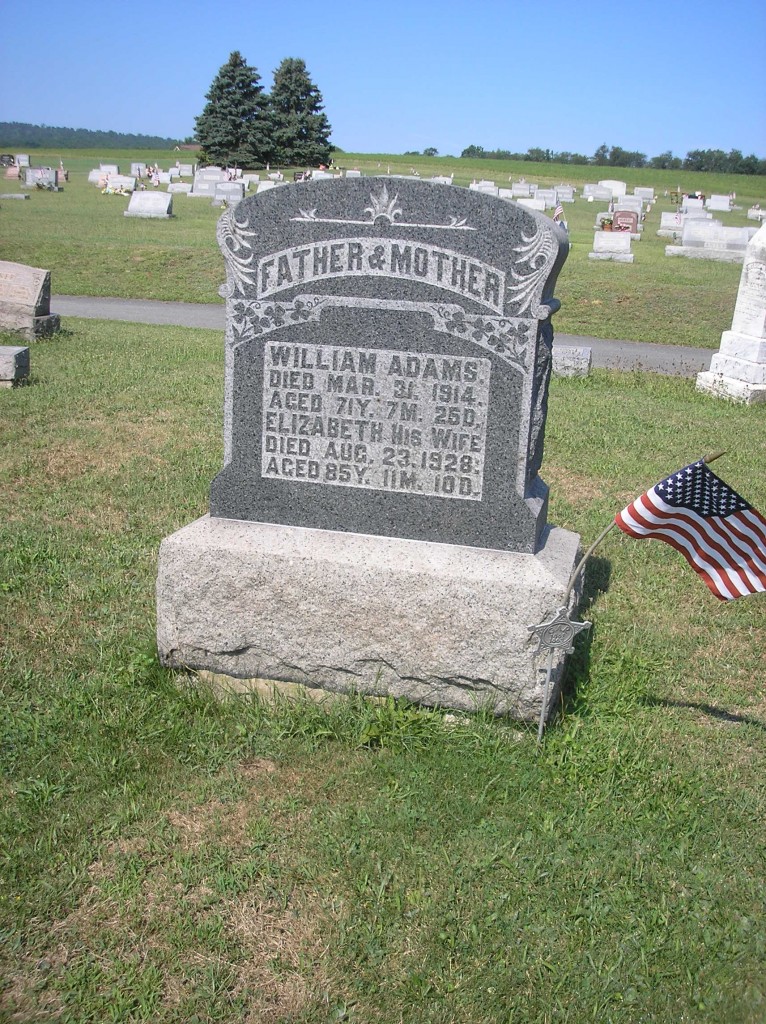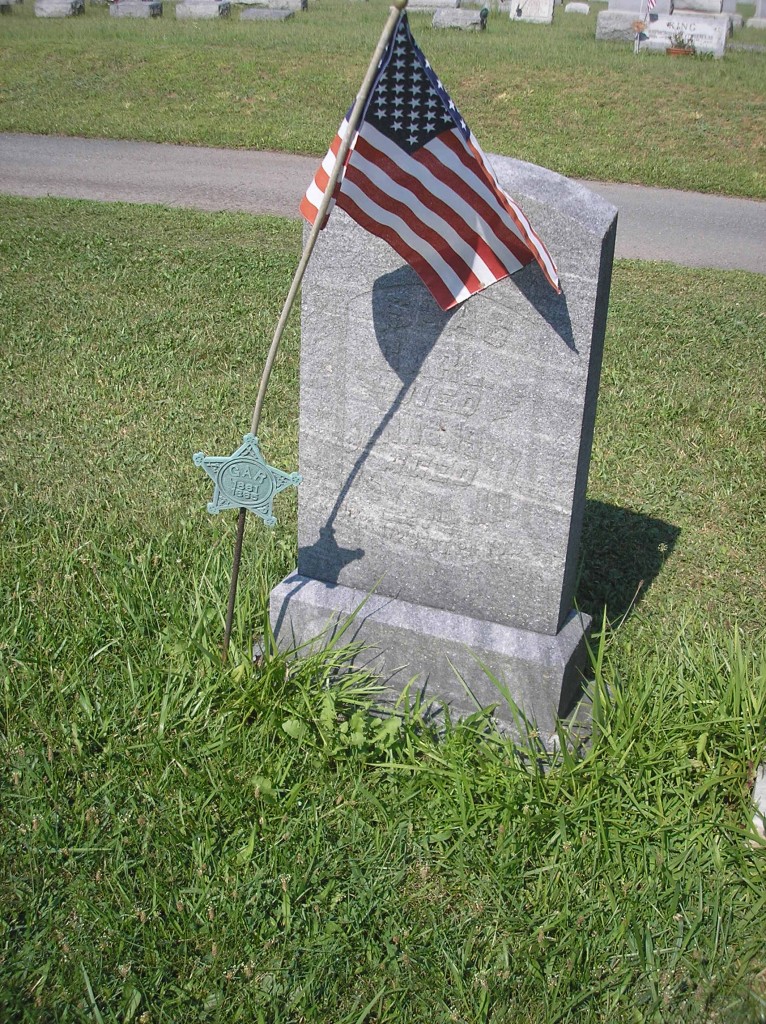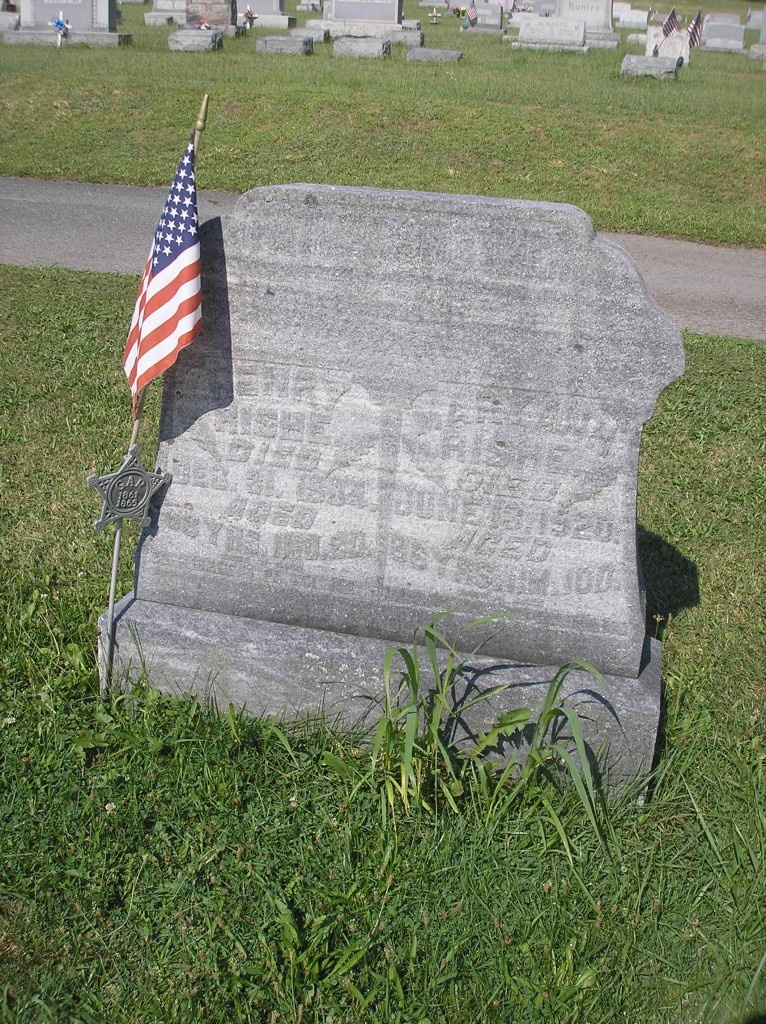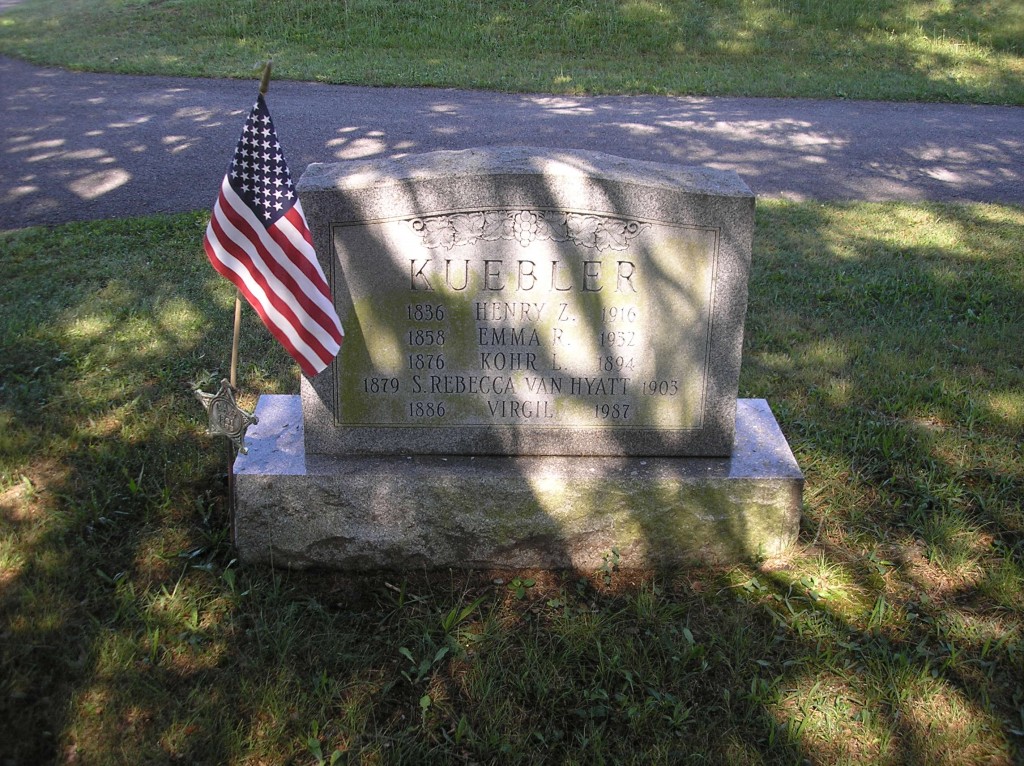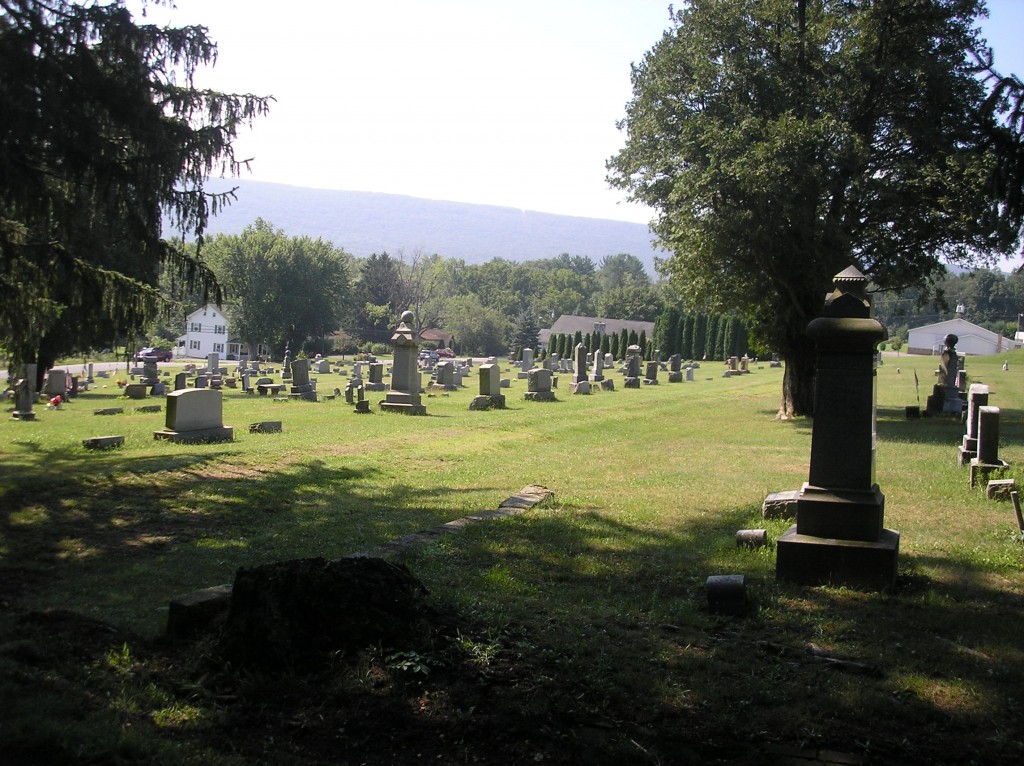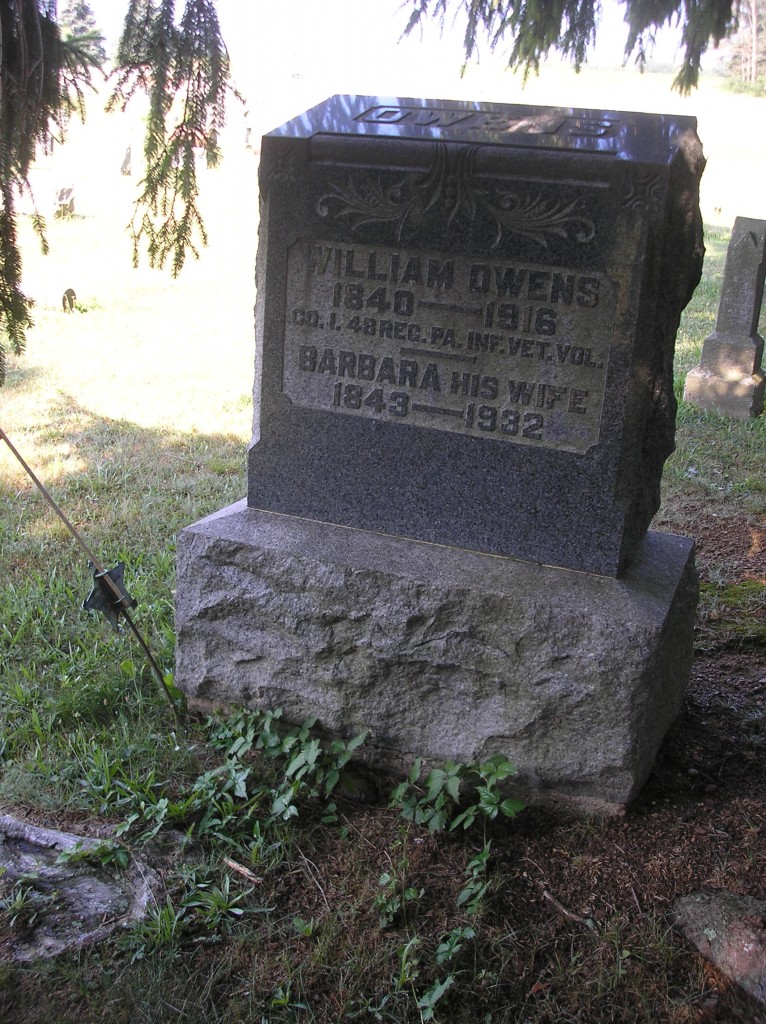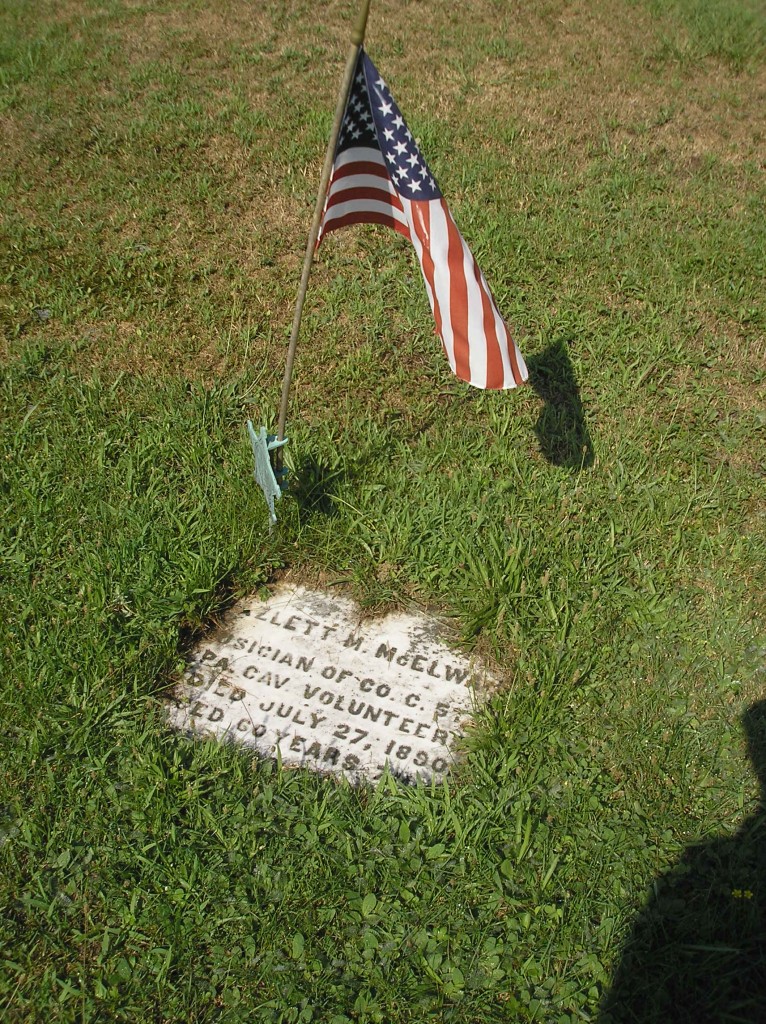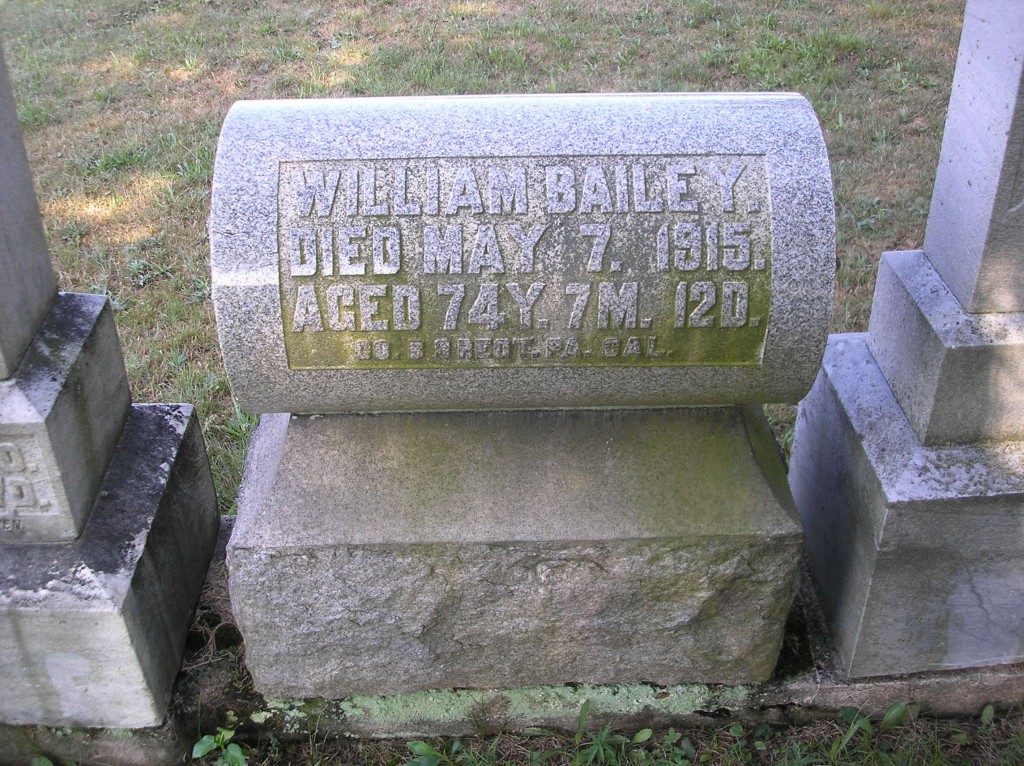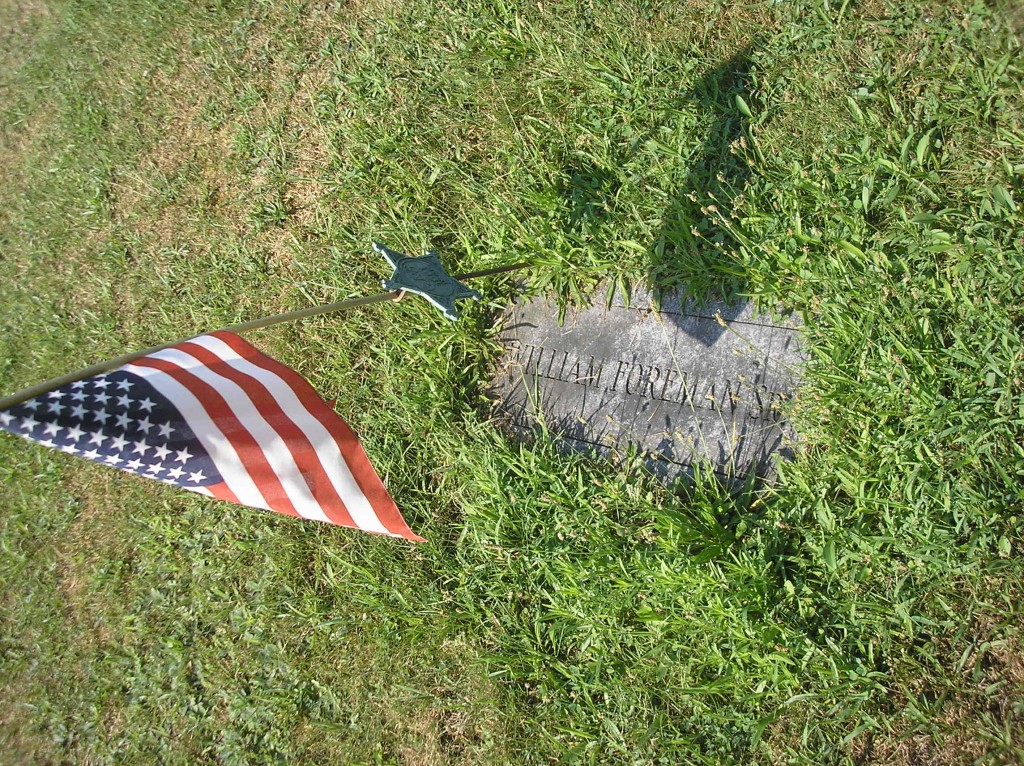Gratz During the Civil War – Phillips House
Posted By Norman Gasbarro on September 17, 2012
The ownership of this Lot #13 from Simon Gratz to about the 1850s has not been determined. However, an early owner was Adam Willier, who by 1855 had a tenant, T. Radel. In 1858, a transfer was made to John Phillips who had a small house here during the Civil War years. Phillips was a wagon maker but the records show that Radel continued to be a tenant for a while and probably operated a blacksmith business from here. All remnants of that first house are now gone. Thus, for the Civil War years, this was the Phillips house.
After the Civil War, the Independent Order of Odd Fellows (I.O.O.F) in Gratz saw a rapid growth in membership as the returning veterans began to settle back into their lives. Many men sought both the camaraderie and security that the Odd Fellows provided as well as a social outlet for their families.
Because of the activity of the I.O.O.F. and its dominant role in the community, the G.A.R. did not take hold in Gratz until much later in the century – and more than 20 years went by before that organization began to compete with the I.O.O.F. for membership. The returning veterans, anxious to settle back into their lives as they were before the war, were more willing to join and participate in an organization that welcomed all – whether or not they had fought in the war.
The smaller headquarters building of the I.O.O.F., east of Centre Street (see yesterday’s post for Lot #45), was insufficient, and plans were made to purchase another property in town and erect a grand hall.
In 1872, John Phillips sold his property (Lot #13) to the I.O.O.F., with trustees Isaiah Schminky, J. C. Good, and W.H. Showers signing for the purchase. Construction began in that summer. At a final cost of $4000, a grand sum in those days, the new I.O.O.F. building was completed and dedicated on 2 June 1873. The dedication ceremony was attended by visitors from throughout the region and a long parade was assembled which marched toward Klingerstown where a picnic was held.
One of the earliest pictures of the “new” I.O.O.F. building was taken around 1887. The men who were identified in the photo were: Frank Good, Oscar Tobias, George S. Klinger, Franklin Erdman, John Willier, George Kissinger, William S. Boyer, and Samuel Buffington..
As the century ended the building could boast that it was the meeting headquarters for nearly all the lodges and organizations in and around Gratz including the G.A.R., the Patriotic Order of the Sons of America, the Knights of Pythias, the Knights of the Golden Eagle, the Gratz Cornet Band and the Gratz Grange. As these organizations declined in popularity, others took their place, including the American Legion which supplanted the G.A.R. as the major veterans group in the early 20th century. The first floor of the building was leased as a store and the basement was renovated as a social hall with kitchen facilities – often used by church and scout groups for socials. At one time there was even a flower show held here.
In the 1920s, the town library was housed here. Grammar and high school classes were temporarily held on all floors in 1926 while the regular school building was being repaired from fire damage. A shirt factory building, constructed in 1910, occupied the rear of the lot and although that part of the property was sold off from the front, the factory used the basement of the I.O.O.F. building as a pressing room.
After 1929, the building was sold to Marlin Reed and Iva Reed, and it ceased being used as a community building. Marlin Reed operated Reed’s Fine Furniture from here and his son Jack Reed and grandson James Reed continued in that business up through the 1970s. In the 1920s, undertakers generally were associated with the furniture business and Marlin Reed was no exception. Thus the building became the headquarters for the Reed’s funeral enterprise.
The I.O.O.F. building currently houses a business, “The Grand Entrance.” The restored building to the right is the historic first home of the Gratz Fire Company which was formed in the 20th century.
Although this building was not part of Gratz during the Civil War,the organization which built it in 1872 was active in Gratz before, during and after the Civil War. And, the G.A.R. made this building its headquarters in the latter part of the 19th century.
This is part 37 of an ongoing series on Gratz during the Civil War. Some of the information for this post was taken from the book A Comprehensive History of the Town of Gratz Pennsylvania.
Other parts of the series on Gratz During the Civil War can be found on this blog by clicking on “Walking Tour.”
 ;
;
